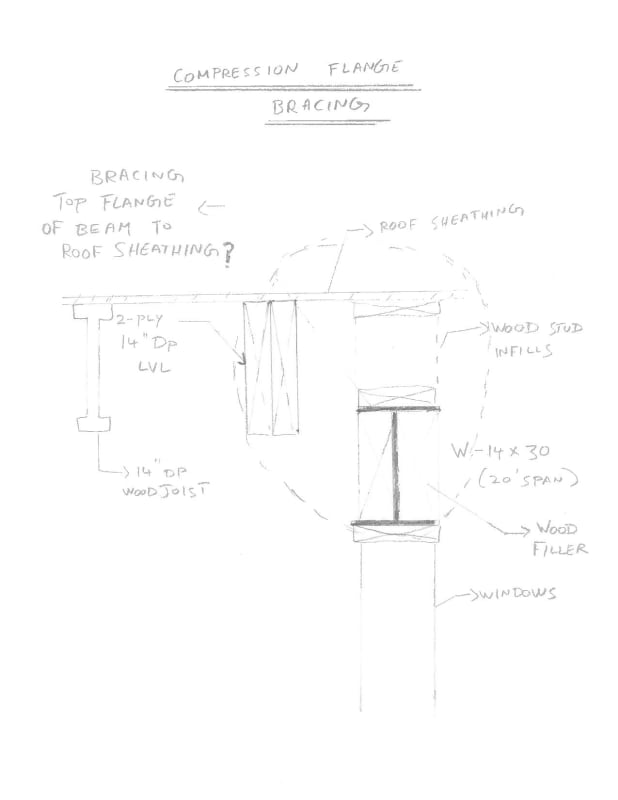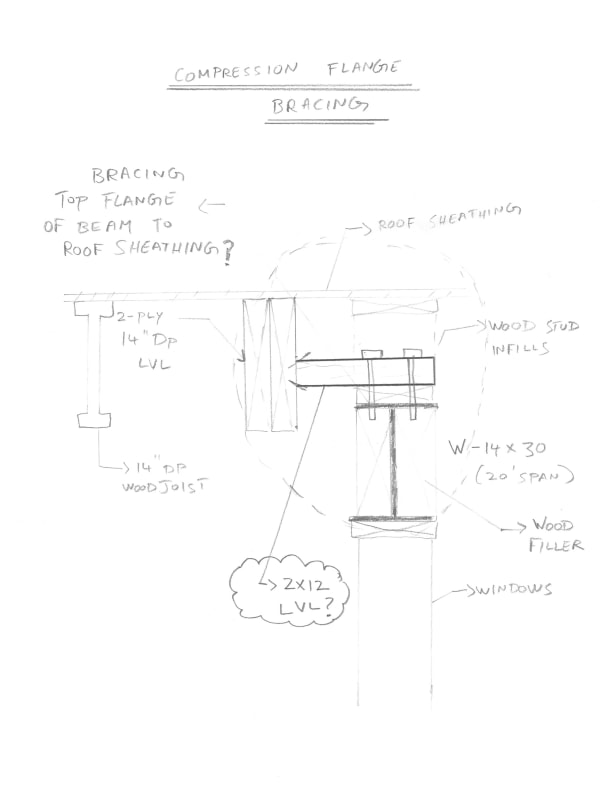Vrpps EIT
Structural
- Aug 21, 2018
- 58
Hi All,
There is this situation of Joists running parallel to steel beam at roof level, but there is a difference in height between the End steel beam and the roof level. So the top flange of steel beam is not being braced or connected by the roof diaphragm (sheathing)directly and the LTB of steel beam controls the design. So I have attached a view of it with wood stud infills (like knee walls)
 on top of the steel beam to match up to the roof level. In this case, if a bracing is to be considered for steel beam how to go with it?
on top of the steel beam to match up to the roof level. In this case, if a bracing is to be considered for steel beam how to go with it?
My options are:
1). Could I lay the 2x6 LVL studs at every 12"O.C on flat face (horizontally) on top of the wood plate of steel beam and bolt it to the top flange of the beam on one end and nail it to the LVL beam on the other end, so that a horizontal blocking sort of arrangement is achieved which provides a restraint to the buckling of steel beam.
2). or Do I need to have L-Angle connection? between the steel beam and LVL beam?
Appreciate your time for your views, open to any suggestions
Thanks,
Vra
There is this situation of Joists running parallel to steel beam at roof level, but there is a difference in height between the End steel beam and the roof level. So the top flange of steel beam is not being braced or connected by the roof diaphragm (sheathing)directly and the LTB of steel beam controls the design. So I have attached a view of it with wood stud infills (like knee walls)

My options are:
1). Could I lay the 2x6 LVL studs at every 12"O.C on flat face (horizontally) on top of the wood plate of steel beam and bolt it to the top flange of the beam on one end and nail it to the LVL beam on the other end, so that a horizontal blocking sort of arrangement is achieved which provides a restraint to the buckling of steel beam.
2). or Do I need to have L-Angle connection? between the steel beam and LVL beam?
Appreciate your time for your views, open to any suggestions
Thanks,
Vra

